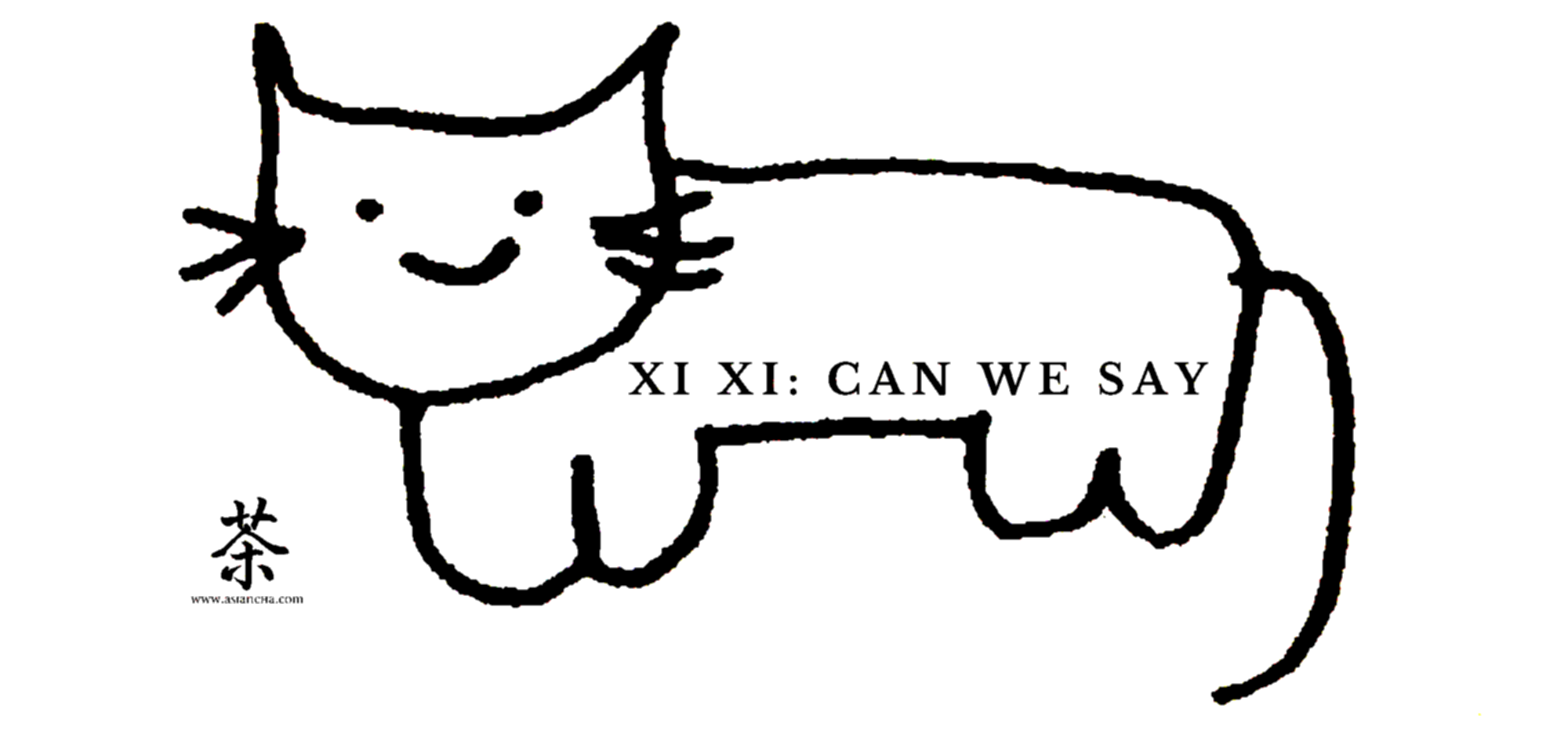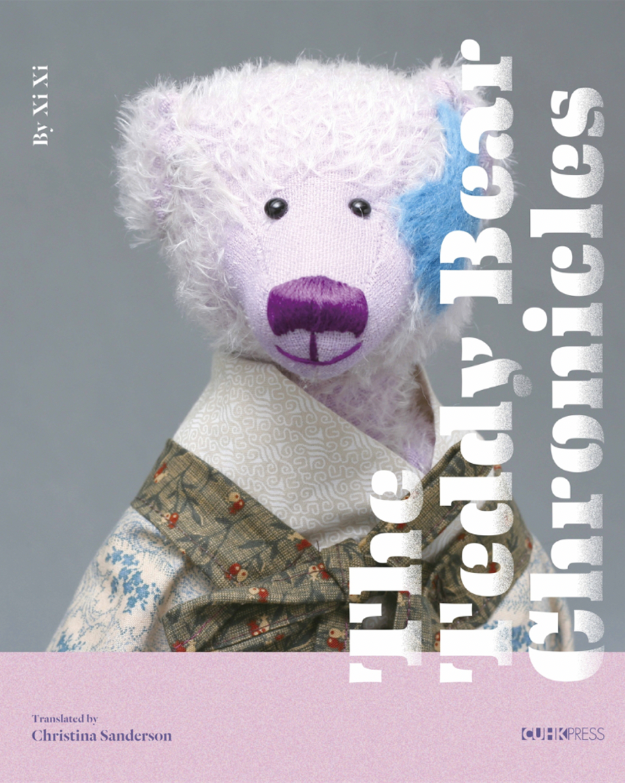by Ilaria Maria Sala
I don’t know why we assign ourselves roles defined by age—or why the word “childish” should have such a negative connotation when applied to adults. One of the (many) reasons why I love Xi Xi is her refusal to accept these pointless strictures. From here you should already be able to see where I am going.
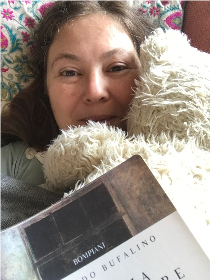 I much prefer the simple expression “bear” to “teddy bear”. I find the connection to president Theodor Roosevelt disturbing. Apparently he refused to shoot a captive bear cub, and so was depicted in a newspaper cartoon turning his back to the poor scared creature, which was the reason why a toy maker about to strike gold started producing little bears called Teddy. Why disturbing? Because that American president might have spared one cub, but he was still unperturbed by shooting bears and other animals. So I’d rather leave him out of my bearish thoughts. To me, bears are among the most magical companions. Not just bears, of course—an old friend of mine wouldn’t dream of spending a night out without her rabbit. But if you spend your sleeping hours with such friends, you will find words wanting. Stuffed animals? That sounds really quite coarse. Teddy bears, as we have seen just now, is also inadequate. Toy animals? Soft animals? No. None of these terms will do, so it’s no wonder most of these creatures get given proper personal names (well, the rabbit was called Mr Rabbit, which makes me think he was never one to disclose too much about himself). My own sidekick is called Orso Buono, which is Italian for Good Bear, very often shortened to Buono, which simply means Good. He is a brown bear who a few years ago started wearing a brown jacket I knitted for him, as he is getting a little frailer with age. He is, of course, still a fierce beast, knitted jacket or no knitted jacket, prone to going wild in mountain settings—like the Dolomites, or Mount Fuji.
I much prefer the simple expression “bear” to “teddy bear”. I find the connection to president Theodor Roosevelt disturbing. Apparently he refused to shoot a captive bear cub, and so was depicted in a newspaper cartoon turning his back to the poor scared creature, which was the reason why a toy maker about to strike gold started producing little bears called Teddy. Why disturbing? Because that American president might have spared one cub, but he was still unperturbed by shooting bears and other animals. So I’d rather leave him out of my bearish thoughts. To me, bears are among the most magical companions. Not just bears, of course—an old friend of mine wouldn’t dream of spending a night out without her rabbit. But if you spend your sleeping hours with such friends, you will find words wanting. Stuffed animals? That sounds really quite coarse. Teddy bears, as we have seen just now, is also inadequate. Toy animals? Soft animals? No. None of these terms will do, so it’s no wonder most of these creatures get given proper personal names (well, the rabbit was called Mr Rabbit, which makes me think he was never one to disclose too much about himself). My own sidekick is called Orso Buono, which is Italian for Good Bear, very often shortened to Buono, which simply means Good. He is a brown bear who a few years ago started wearing a brown jacket I knitted for him, as he is getting a little frailer with age. He is, of course, still a fierce beast, knitted jacket or no knitted jacket, prone to going wild in mountain settings—like the Dolomites, or Mount Fuji.
If you know Xi Xi at all, her works and her story, you know about her health problems, and the determination with which she faced them. In 1989 she was diagnosed with breast cancer, and after a successful yet invasive operation and post-surgery treatment, she found herself out of danger but with damaged nerves in her right hand. This is when she taught herself to write with her left hand, and also when she picked up needles, threads and fabric to keep her fingers nimble. In 1992 she published Elegy for a Breast 哀悼乳房. She continued with her crafting, building doll houses and puppets, until she concentrated on sewing bears, dressing them in beautiful, historically inspired costumes. The bears that came from her hands were of many types, including a large number of charming ursine incarnations of mythological, historical and literary figures. For some of the best photographed ones, if you haven’t already done so, see The Teddy Bear Chronicles (first published by Joint Press Publishing in 2009 as 縫熊志 and translated by Christina Sanderson into English for Chinese University Press in 2020). The photographers whose work made the book so exquisite are Chan Kum-lok 陳錦樂 and Lum Kwok-wai 林國威.
In the photographs you can see very many details: the bears are quite tall, as companion bears go, and rather athletic, with slim arms and legs. However, they stand on rather reliable long and large feet. In some pictures we can see Xi Xi next to them, and they are actually as long as her torso, although she also made bears in various sizes.
We cannot know if she would have given life to her bears were it not for her health troubles, and without the need to neutralise the lingering side effects of her treatment. But as this is a hypothetical question, we needn’t worry ourselves too much about it: she made bears, so many and so lovely and so time-consuming as to be an important endeavour and not some passing fancy. She could have spent her time differently, or picked up crocheting or ceramics. She could have made giraffes or cats. Or elephants, as Margarete Steiff, the German seamstress who in 1880 founded the Steiff toy house, originally did. Steiff’s company was the creator of the first European bear, made by her nephew Richard Steiff, at the same time as Morris Michtom was making one in the US, both men being impressed by the cartoon of Theodore Roosevelt not shooting the captive bear cub. It is true that she had meant them to be used as pincushions, and it was her clients who decided instead that they would be perfect as companions for children. Soon after, her factory in Giengen in southern Germany started producing all sorts of friendly animals, and bears from 1902, the same year Roosevelt declined to shoot the bear cub.
But Xi Xi’s bears have remained bears, consistently. When we look at them, we do not see wild animals that might suddenly jump at us and maul us, but literate, refined and sophisticated bears that know how to tie the silk laces of their ancient costumes and who bear thoughtful expressions. Of course, this is when they know they are being watched: who is to say what they get up to when they are out of human sight. By the same token, who knows what my Orso Buono does when I am not around. As I know him to be a good bear I don’t think he has ever gotten into a fight, unless, maybe, to defend me in some incident unbeknownst to me. I will tell you more later, but he has been wounded in the past, although he never told me how it happened. Could he really get involved in scuffles? I am aware that it is a mistake to assign human morality to wild beasts. Nature has its own laws, untamed by our moral categories. So we have to be grateful to the bears that spend their time with us being so willing to adapt to human customs, those who may reach our beds with mysterious wounds, and yet stay civil and comforting. Another companion bear of mine, named Osvaldo, even wears a satin ribbon around his neck, which makes him look very elegant. It hangs a little though, maybe in an excess of dandyism, or maybe because he has hastily pulled it on when I return to his company? So many secrets.
The fact that Xi Xi made such a number of bears cannot simply be dismissed as a slightly “childish” oddity in a body of work that gives a lot of importance to child-like wonder (and again, why does “childish” have negative connotations?). In The Teddy Bears Chronicles, the stories of the famous bears she has sewn and given life to are related in her beautiful matter-of-fact voice, where things are what they are, in a somewhat bewildering manner, which needs to be accepted as we accept the bewildering fact that we inhabit a round planet that relies on a fiery star for all our most basic necessities. Xi Xi’s erudition being well known, it should be no wonder that her bears are also very cultured: she has bear-ed Cao Xueqing, the author of the 18th-century novel Dream of the Red Chamber. The philosopher Zhuangzi and the historian Sima Qian have been incarnated as languid bears. The mythological Yellow Emperor and his wife Leizu, credited with the invention of silk (very useful to clothe bears who need to dress for an elegant occasion, or for those with a weakness for luxury) also appear in all their ursine splendour, decked out in beautiful royal clothes.
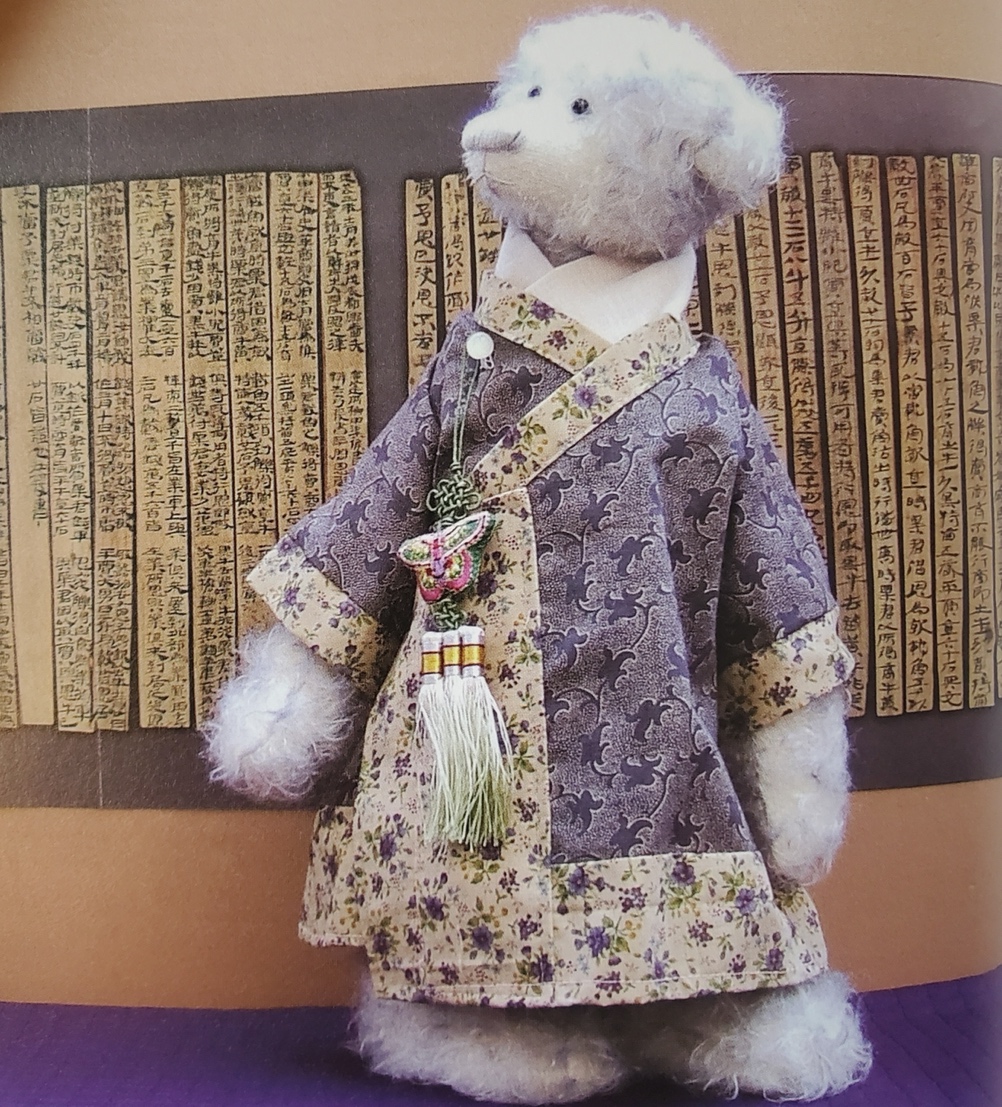 Sima Qian
Sima QianArtists and writers, philosophers and conquerors (Genghis Khan is bearified, too) and explorers (hey look, Zheng He, the Ming dynasty explorer, was a bear too!) together with Mulan and the heroes from The Water Margin and some other figures not from the Chinese tradition are there in the pages of her books as they were around her: a bear, and another one, and yet another one, easy to tell apart thanks to their different personalities and costumes. It is rather difficult to mix up one’s closest friends.
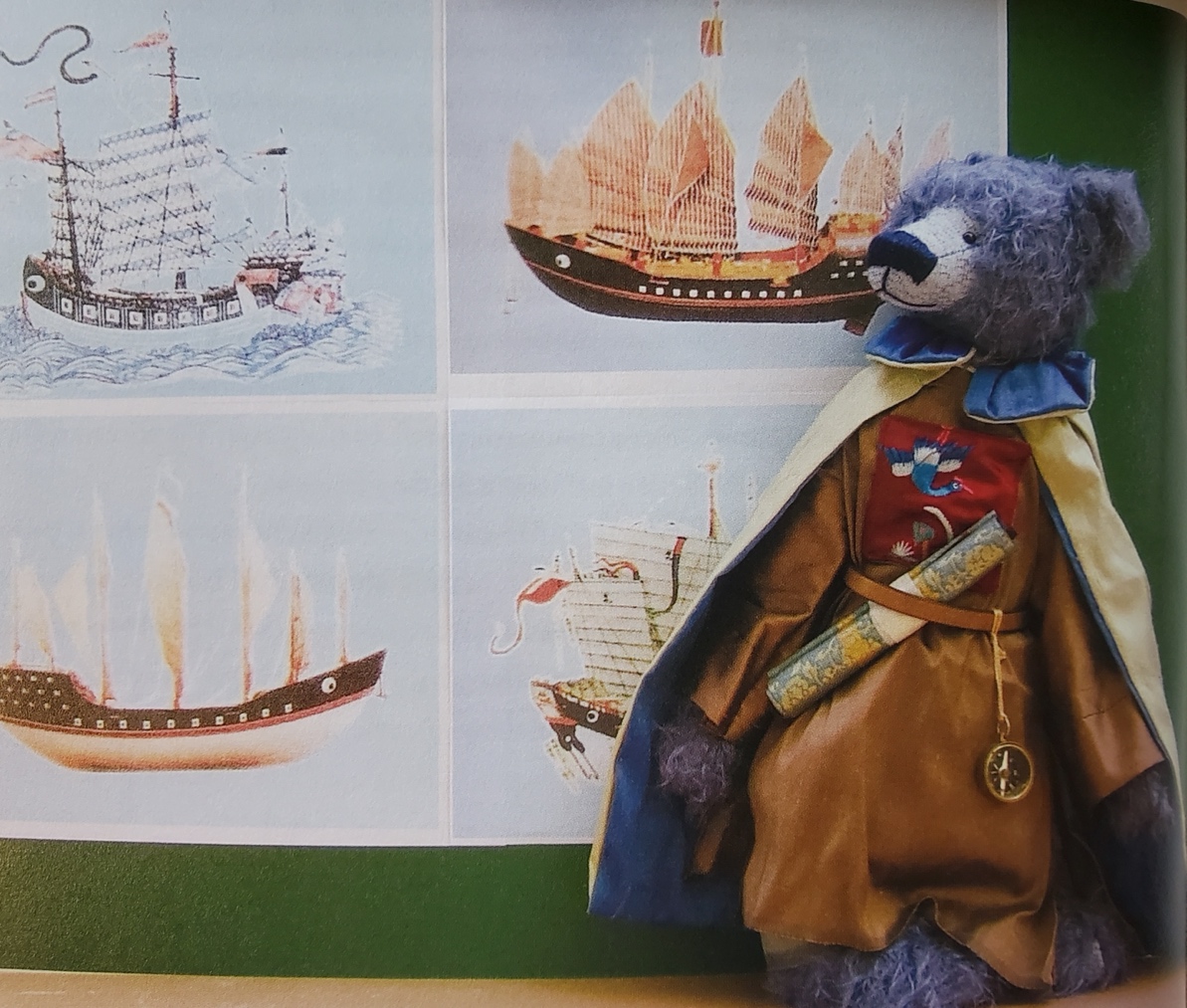 Zheng He
Zheng HeThe fact is, if you are unwilling to accept that everything around us has a personality, and that bears have a larger personality than most, you are really hurting yourself. What is the point of depriving ourselves of wonder? The wonder of the wind blowing through leaves, and making grass shiver. The wonder of birds singing and flying. The wonder of objects being reliantly there, like this desk I am writing on, here for as long as I use it. I don’t know if it will still be there tomorrow, or later still—so, for now, I thank it for being so solid and holding my computer without complaint.
One of the great comforts I get from Xi Xi’s books is that she has no time for inanimate coldness. I have always felt the same, and when I discovered her work I was so relieved by this unexpected agreement. On days when life is excruciatingly painful, we move along floors that support us, doors that let us through, and Orso Buono is there in bed, with hidden thoughts and opinions that keep me wondering. On happy days, too, floors support us and might be thankful if we walk on them with more lightness. The air parts to let us move through it with an imperceptible murmur, hello, hello there is space for all, I move and you move, look at how the world can twirl. Days when Xi Xi has taught us that whole cities are alive in all of their parts, and that what happens to them happens to us and to others like us. But. There are also the days when we mourn—like me, now, trying to learn the impossible task of mourning a mother. Those are the darkest days, the days that cut your heart in two and stuff it in your lungs, making breathing so hard, and I don’t know why this is what they do. Those are the days when, defeated, I keep Orso Buono on my chest—my fingers caress the thick stitches on his neck and on the back of his head, put there by my mother, after his secret adventures roughed him up a little, and left him with valiant wounds that she stitched close for him and me.
There is another connection. I am grateful to have discovered a world in which I feel as fully at ease as Xi Xi’s. It also meant that asking my mother to fix Buono up while it was still possible was part of this perfectly coherent universe: now, if he gets himself into trouble again I will have to do it myself and wonder, Xi Xi-like, a little less. No surgeon can distract themselves wondering how a patient came to be in such a state just as they are operating upon them. Still, I will have to struggle to protect that vital ability to be in awe of what surrounds us, that Xi Xi-sense—is this what the sixth sense is?—that opens our eyes to opinionated notebooks, tired brushes and buckets, daily lives to which we all continuously adapt our inner and outer shapes, surrendering, resisting, avoiding, celebrating, thanking and creating.
Published: Friday 7 April 2023[RETURN TO XI XI]
![]()

Ilaria Maria Sala is a Hong Kong-based writer, ceramicist and journalist. Her works are mostly in English and Italian. Her latest volume is L’Eclissi di Hong Kong (add editore, 2022), on Hong Kong’s history and topography. Her poetry has appeared in Cha, Voice & Verse Poetry Magazine, and in the Hong Kong anthology Making Space (Chinese University of Hong Kong, 2023), among other places. Other than words, bears and ceramics, she likes tea, birds, languages, and the ecological awareness afforded by veganism.
